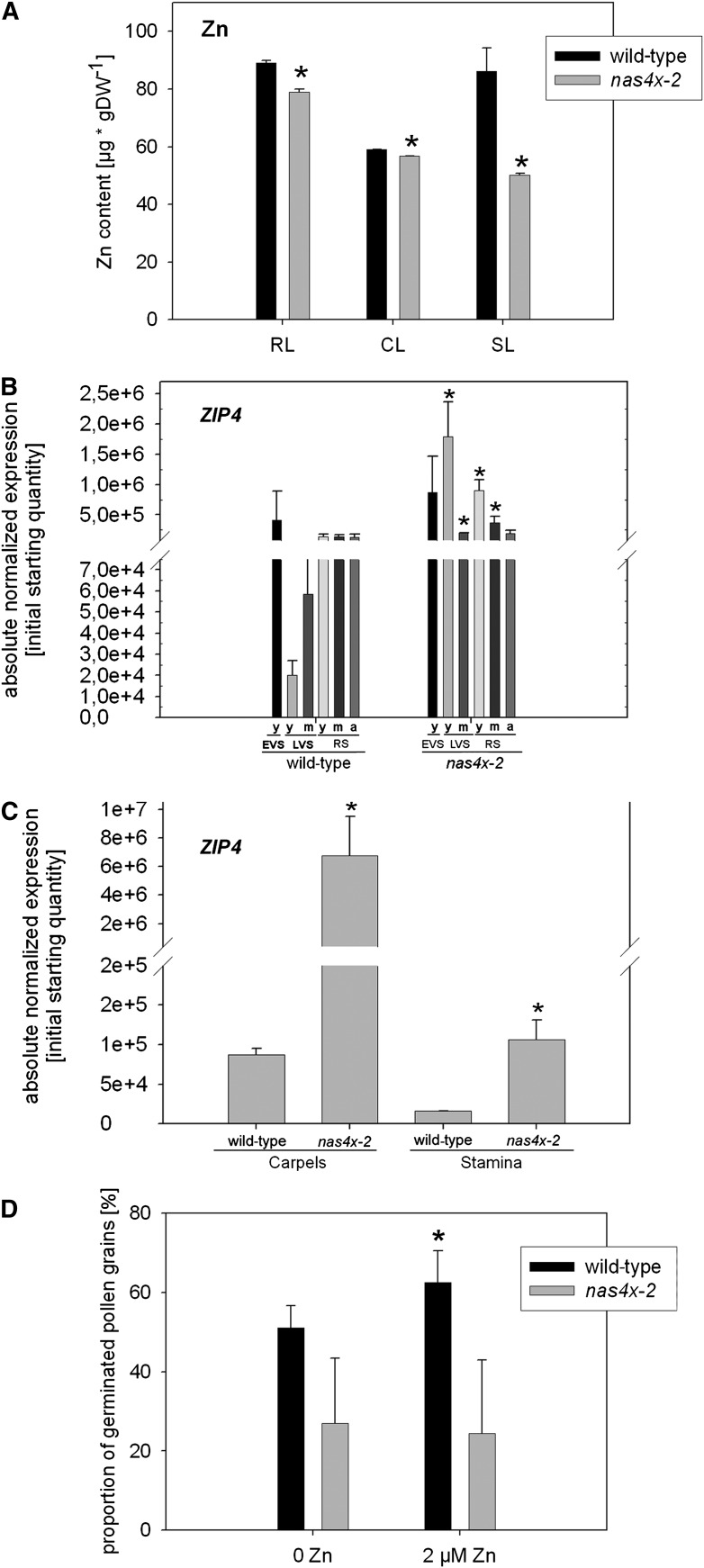Figure 10.
nas4x-2 Plants Were Zn Deficient.
(A) Zn contents of rosette (RL), cauline (CL), and senescent (SL) leaves of plants grown to the RS, showing that Zn contents were reduced in leaves of nas4x-2 plants (error bars are sd; n = 4; *P < 0.05 for the comparison nas4x-2 versus the wild type). DW, dry weight.
(B) ZIP4 expression levels in leaves of different growth stages, determined by quantitative RT-PCR, showing an induction of gene expression in leaves of nas4x-2 (error bars are sd; n = 3; *P < 0.05 for the comparison nas4x-2 versus the wild type). Plants were grown on soil under long-day conditions up to the EVS, LVS, and RS; young (y), middle-aged (m), and aged (a) rosette leaves were harvested for analysis (see phenotypes in Figure 1).
(C) ZIP4 expression levels in carpels and stamen, showing induction of ZIP4. Gene expression was determined by quantitative RT-PCR (error bars are sd; n = 3; *P < 0.05 for the comparison nas4x-2 versus the wild type).
(D) In vitro germination assay of pollen in the absence and presence of 2 µM Zn sulfate, showing that the frequency of nas4x-2 pollen germination was strongly reduced and could not be rescued by Zn supply, while wild-type pollen germination was increased in the presence of Zn (error bars are sd; n = 5; *P < 0.05 for the comparison 2 µM Zn versus 0 Zn; not indicated P < 0.05 for the comparison nas4x-2 versus the wild type).

